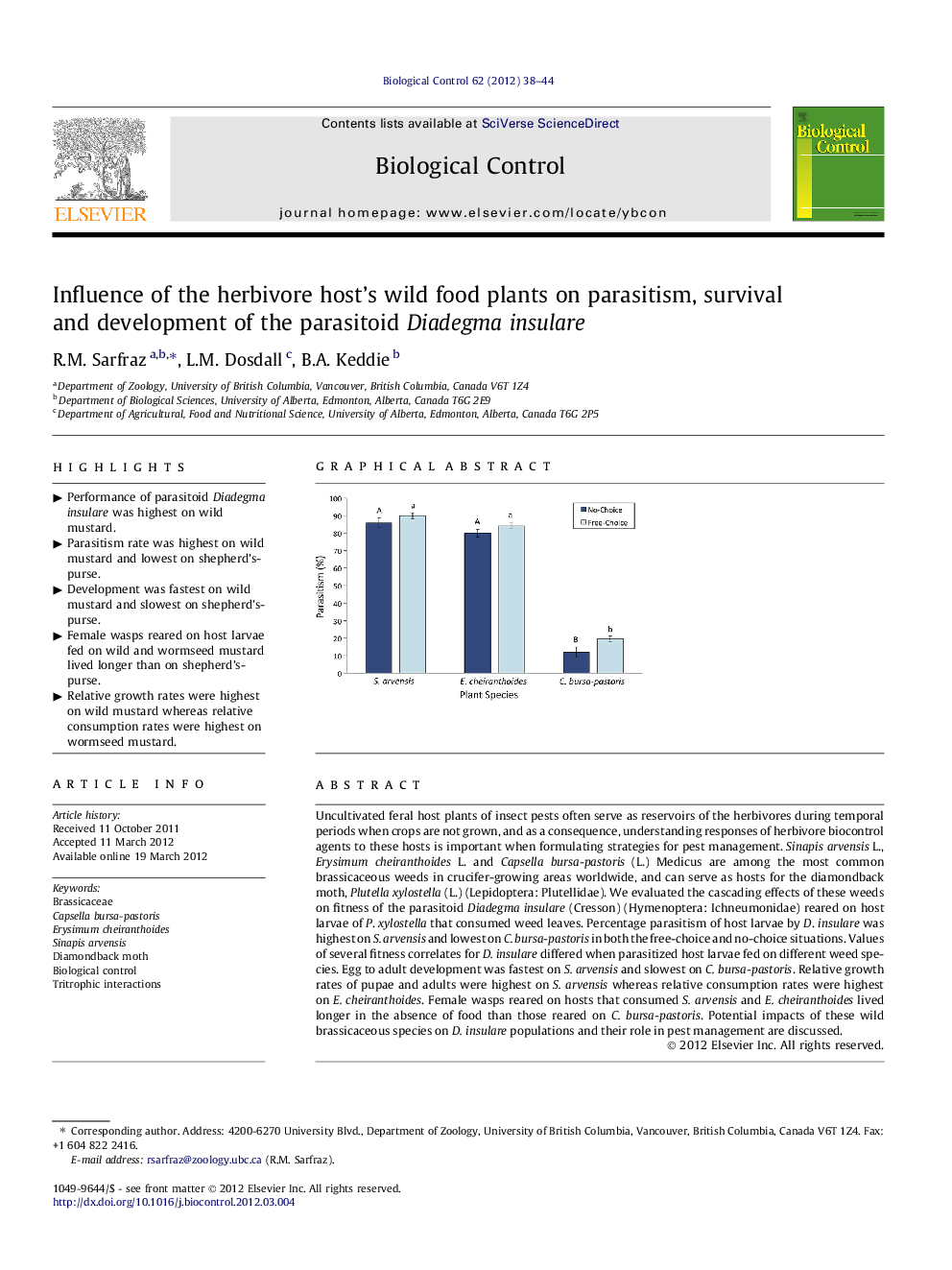| کد مقاله | کد نشریه | سال انتشار | مقاله انگلیسی | نسخه تمام متن |
|---|---|---|---|---|
| 4504079 | 1321057 | 2012 | 7 صفحه PDF | دانلود رایگان |

Uncultivated feral host plants of insect pests often serve as reservoirs of the herbivores during temporal periods when crops are not grown, and as a consequence, understanding responses of herbivore biocontrol agents to these hosts is important when formulating strategies for pest management. Sinapis arvensis L., Erysimum cheiranthoides L. and Capsella bursa-pastoris (L.) Medicus are among the most common brassicaceous weeds in crucifer-growing areas worldwide, and can serve as hosts for the diamondback moth, Plutella xylostella (L.) (Lepidoptera: Plutellidae). We evaluated the cascading effects of these weeds on fitness of the parasitoid Diadegma insulare (Cresson) (Hymenoptera: Ichneumonidae) reared on host larvae of P. xylostella that consumed weed leaves. Percentage parasitism of host larvae by D. insulare was highest on S. arvensis and lowest on C. bursa-pastoris in both the free-choice and no-choice situations. Values of several fitness correlates for D. insulare differed when parasitized host larvae fed on different weed species. Egg to adult development was fastest on S. arvensis and slowest on C. bursa-pastoris. Relative growth rates of pupae and adults were highest on S. arvensis whereas relative consumption rates were highest on E. cheiranthoides. Female wasps reared on hosts that consumed S. arvensis and E. cheiranthoides lived longer in the absence of food than those reared on C. bursa-pastoris. Potential impacts of these wild brassicaceous species on D. insulare populations and their role in pest management are discussed.
Figure optionsDownload as PowerPoint slideHighlights
► Performance of parasitoid Diadegma insulare was highest on wild mustard.
► Parasitism rate was highest on wild mustard and lowest on shepherd’s-purse.
► Development was fastest on wild mustard and slowest on shepherd’s-purse.
► Female wasps reared on host larvae fed on wild and wormseed mustard lived longer than on shepherd’s-purse.
► Relative growth rates were highest on wild mustard whereas relative consumption rates were highest on wormseed mustard.
Journal: Biological Control - Volume 62, Issue 1, July 2012, Pages 38–44